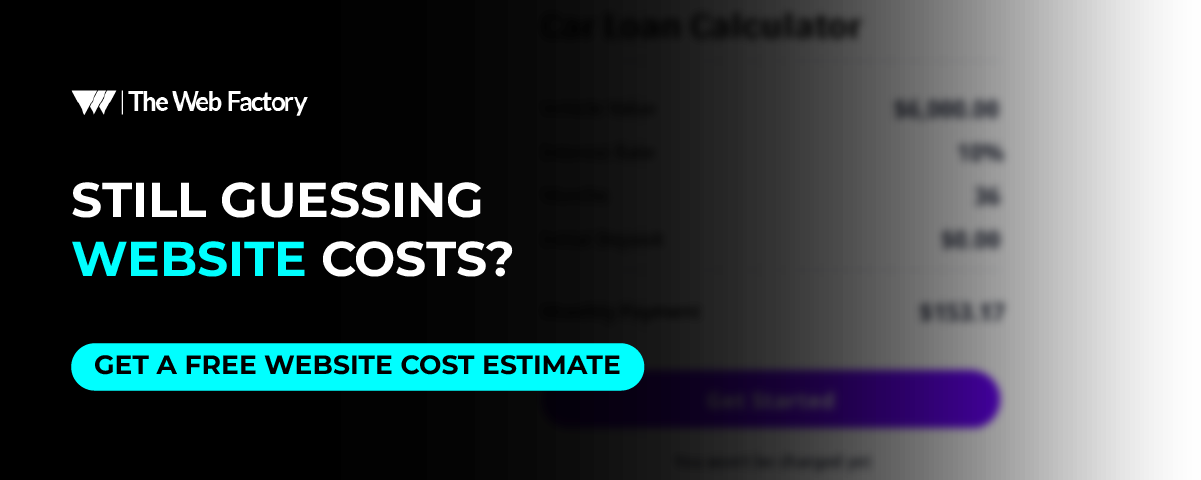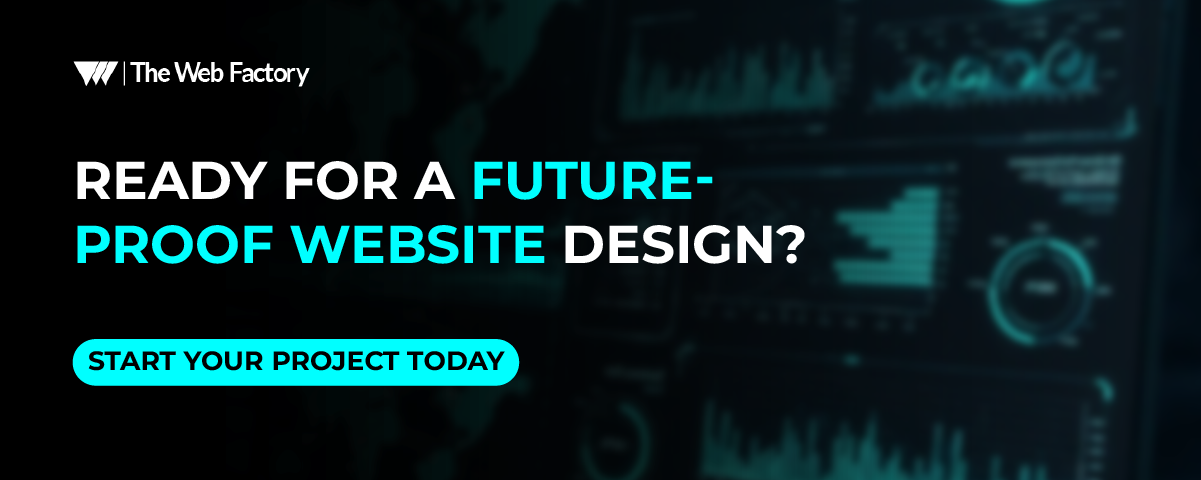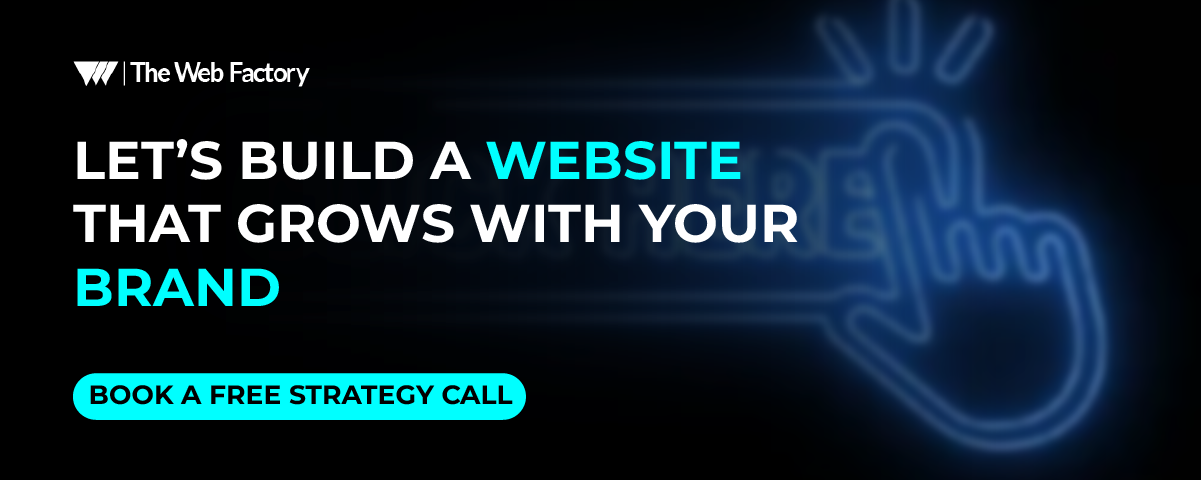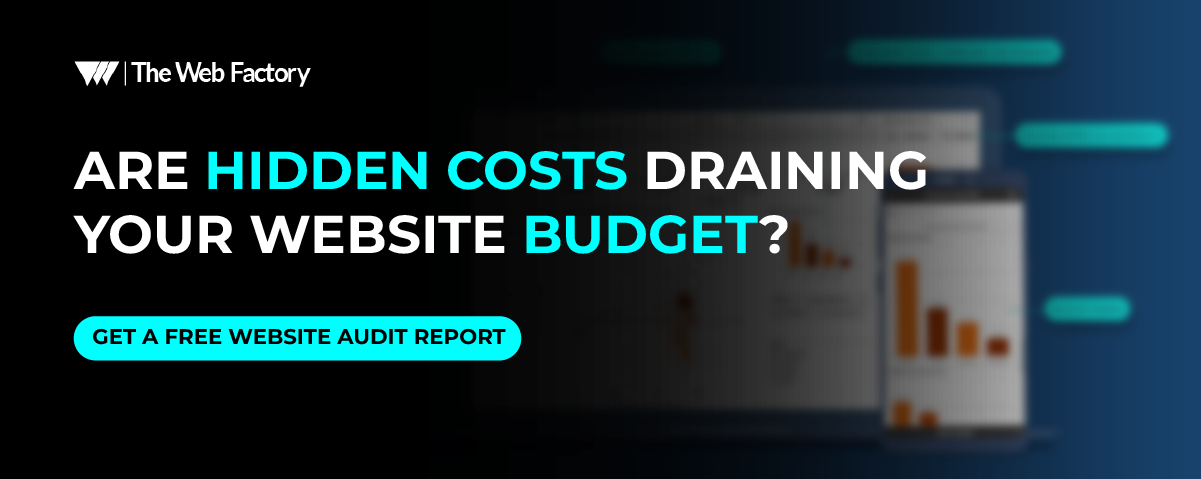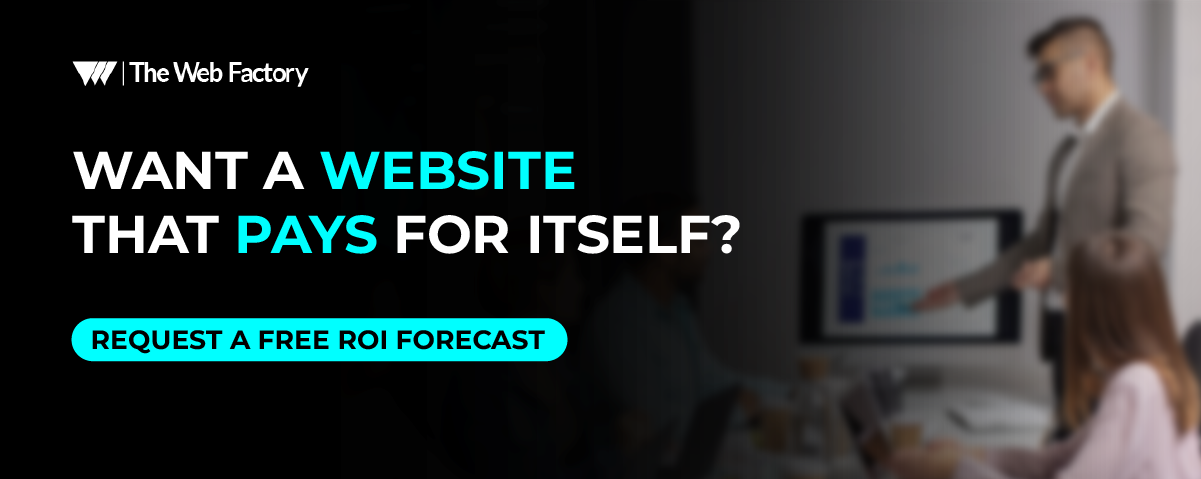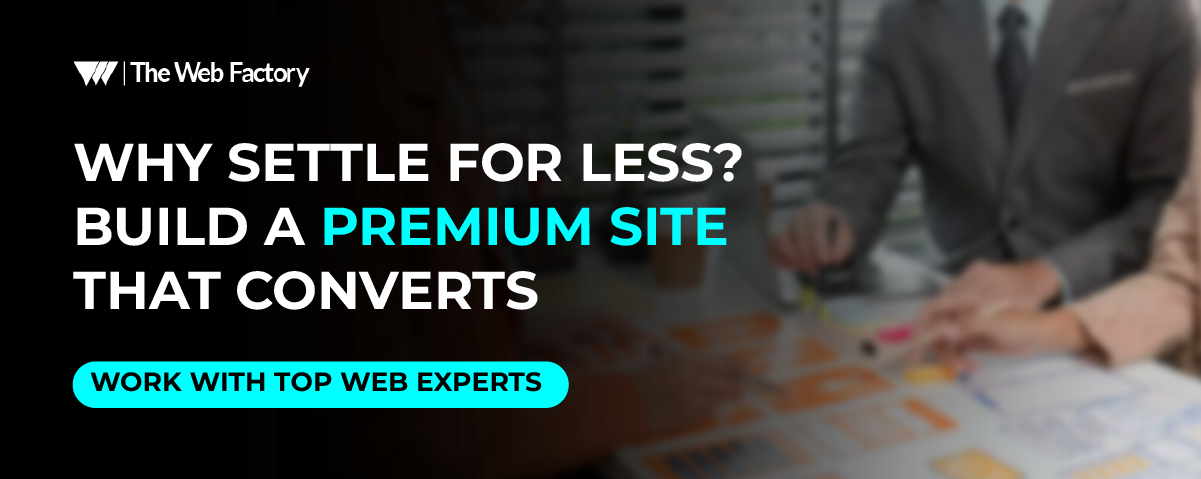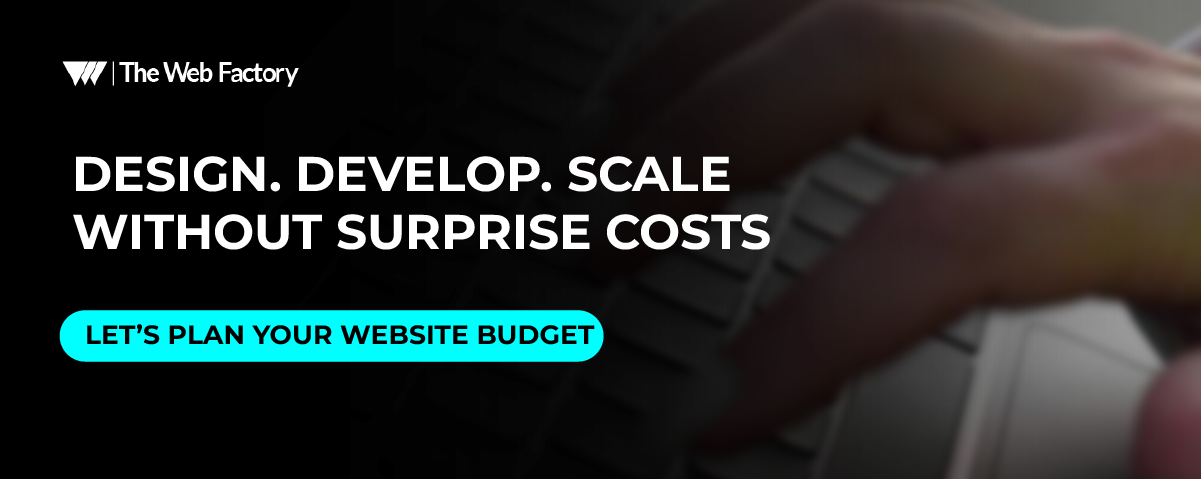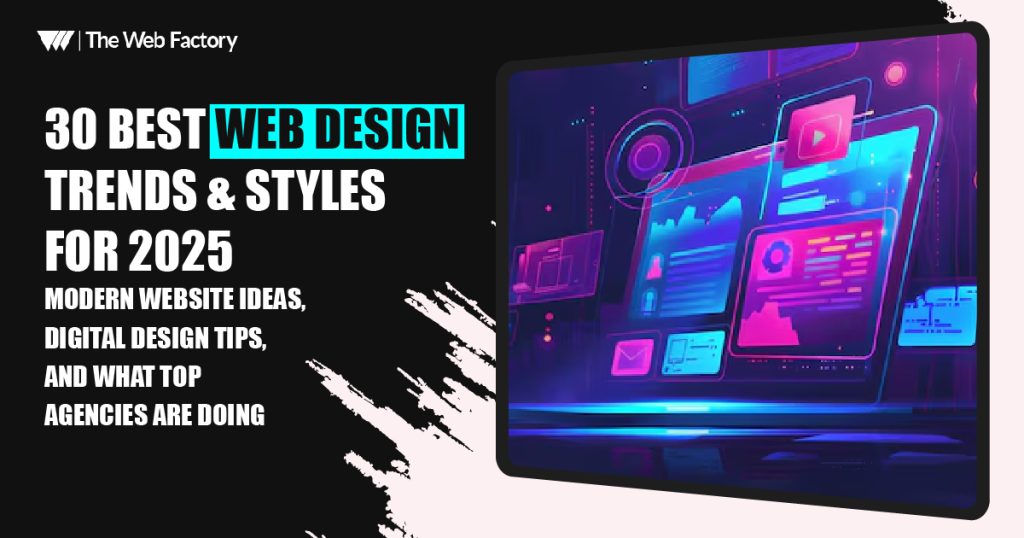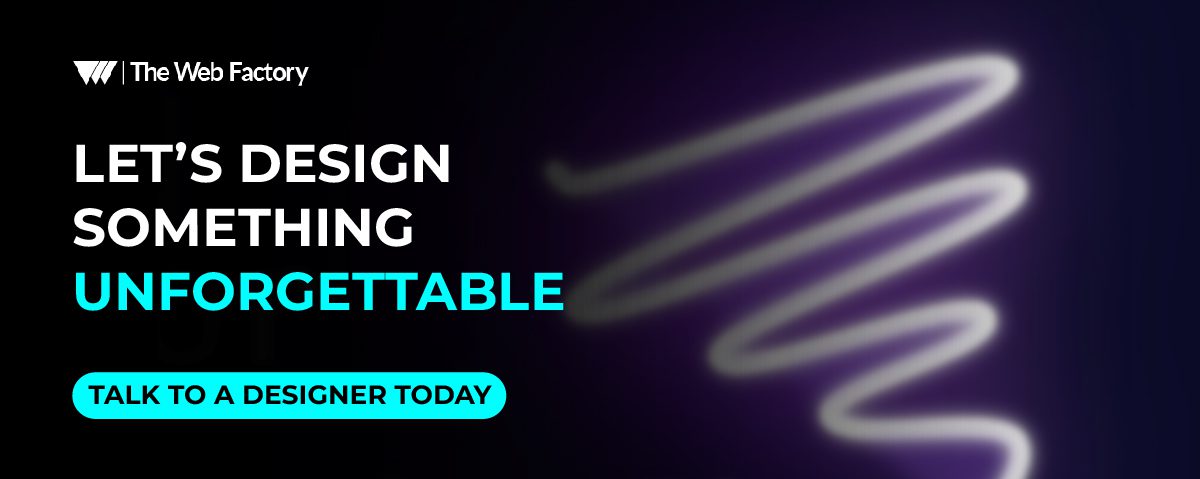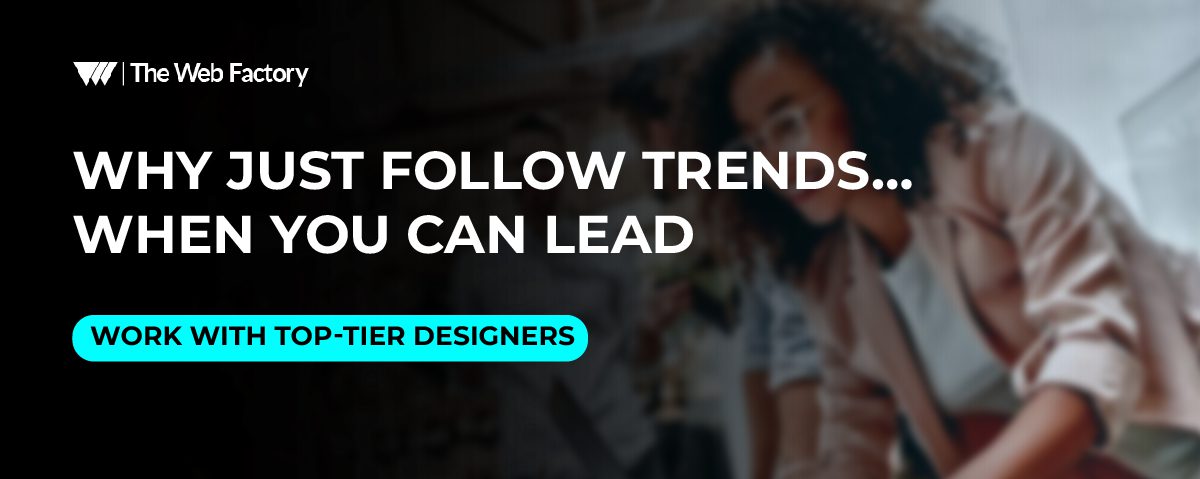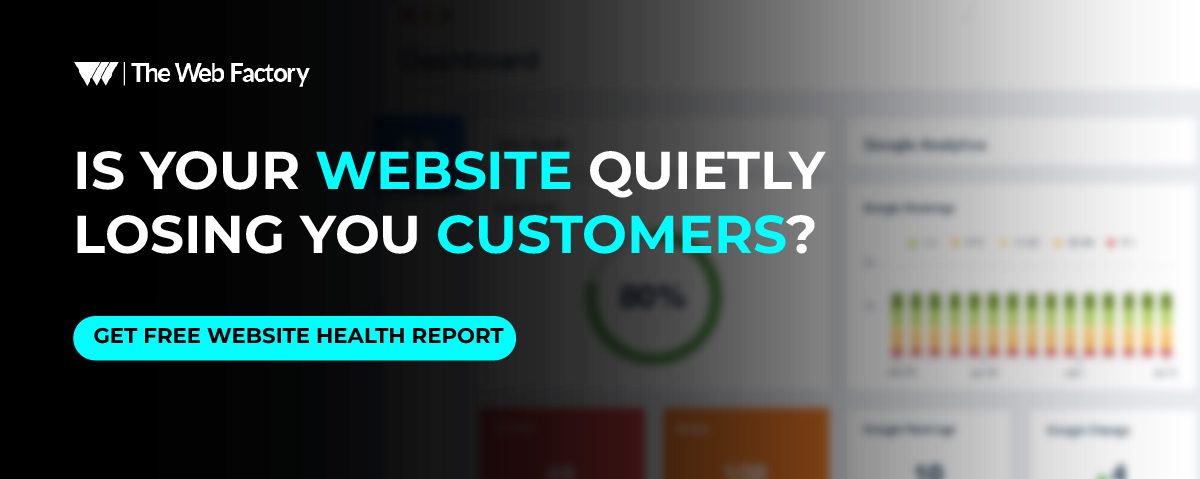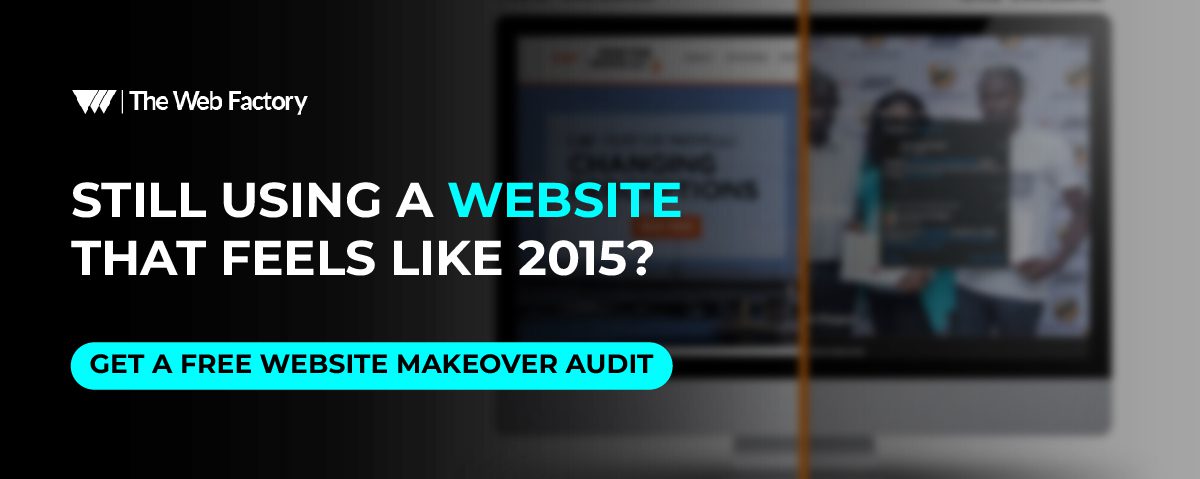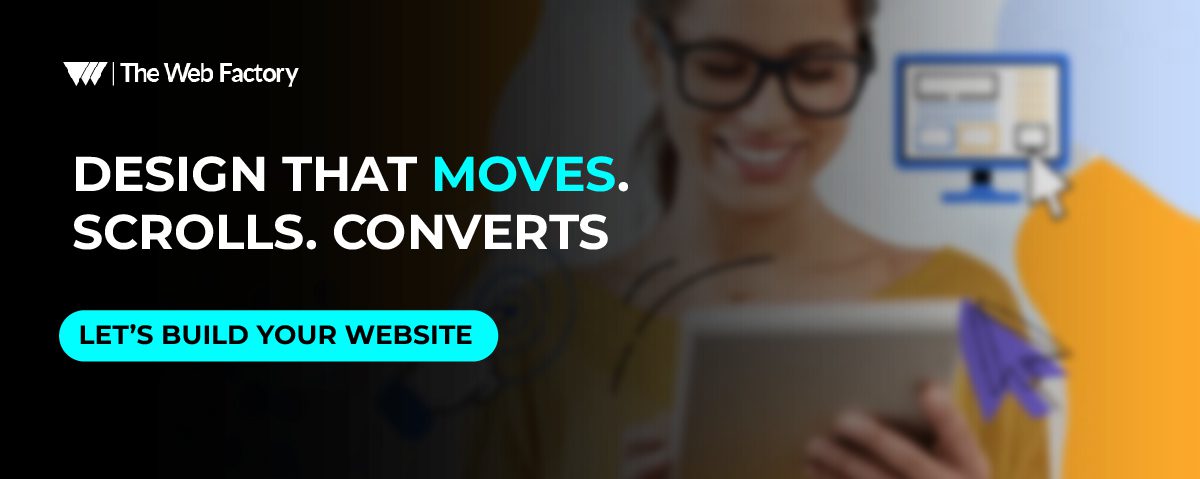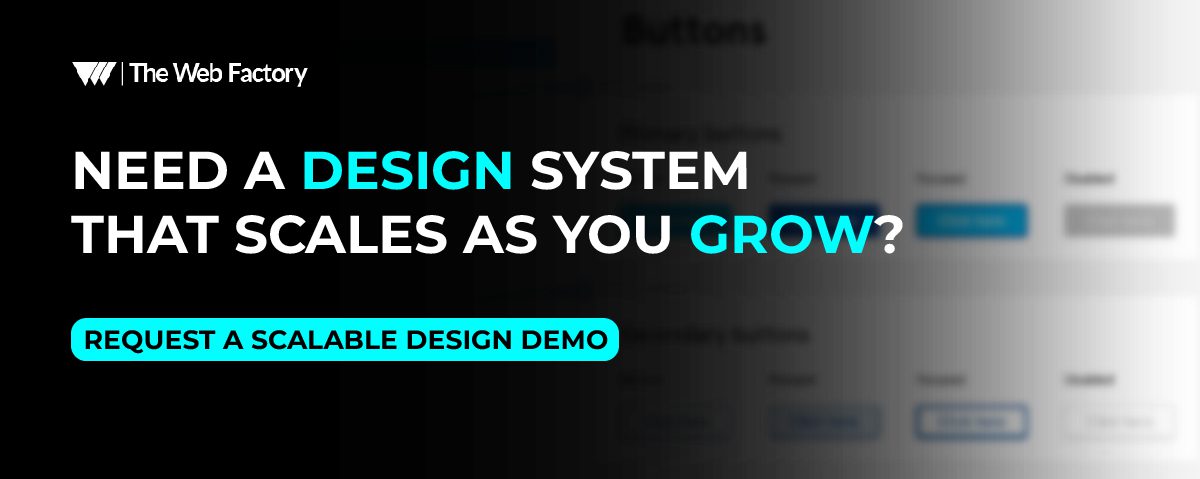/
0:00
How Much Does a Website Cost in 2025? Full Breakdown

Website Pricing in 2025: Why Costs Vary So Widely (and Still Confuse Everyone)
The average cost of a website in 2025 can vary a lot depending on what your business needs. Are you creating a sleek portfolio site, a landing page focused on conversions, or a full eCommerce store with many features? The price can range from $0 to over $100,000—and that doesn’t even include hidden costs like maintenance, hosting, and security.
Based on real-world estimates and industry research, most businesses spend:
-
$500 to $10,000 for small business websites
-
$10,000 to $50,000+ for custom business websites or online stores
-
$0 to $500/month for DIY platforms like Wix or Squarespace
-
$2,000 to $30,000/year on site maintenance, hosting, and updates
Are you hiring a freelancer, partnering with a web design agency, or using a website builder? Understanding where your money goes—and how to get the most out of your investment—is crucial in 2025.
In this straightforward, fact-based guide, we’ll take you through everything you need to know about website design costs in 2025 — from simple one-pagers to large enterprise builds, and from DIY tools to premium agencies.
Here’s what you’ll learn:
- A breakdown of website development costs by business type and website size
- The average website design pricing by freelancers, agencies, and builders
- Hidden fees to watch out for (hosting, SSL, maintenance, etc.)
- The difference between a $500 site and a $50,000 one
- How much should small businesses realistically budget in 2025
- A detailed FAQ section to clear up your biggest questions
- Tips to save money without cutting corners
Key Factors That Affect Website Pricing in 2025
In 2025, asking “how much does it cost to build a website?” is similar to asking “how much does a house cost?” The answer depends on factors like size, features, the expertise of the builder, and what you plan to use it for.
Here are the major elements that determine website design cost:
1. Website Type & Size
The more complex your site, the more it costs. A one-page landing site is a different beast from a 50-page eCommerce platform.
|
Website Type |
Avg. Price Range (USD) |
|
Portfolio / Personal Site |
$300 – $1,500 |
|
Small Business Website |
$1,000 – $5,000 |
|
eCommerce Store |
$3,000 – $20,000+ |
|
SaaS / Web App |
$10,000 – $100,000+ |
|
Corporate Website |
$5,000 – $30,000 |
2. Who You Hire
|
Option |
Cost Range (USD) |
Best For |
|
DIY Builders (Wix, Squarespace) |
$0 – $500 |
Solopreneurs, test projects |
|
Freelancers |
$500 – $5,000 |
SMBs, budget-conscious brands |
|
Web Design Agencies |
$3,000 – $100,000+ |
Brands looking for strategy, scale, and polish |
Freelancers offer flexibility and affordability, but professional web design companies provide strategy, support, and custom development.
3. Design Complexity
- Custom UI/UX? Extra cost.
- Motion graphics or 3D visuals? Expect $$$.
- Templates and pre-made themes? Cheaper, but less unique.
If you’re going for a modern web design or trying to showcase your brand story, having strong visual features can really make a difference, and they can also contribute to your profits.
4. Functionality
The more you ask your site to “do,” the more it’ll cost.
- Login portals
- Online booking
- Payment gateways
- Inventory sync
- CMS integration
- Custom dashboards
These add development hours—and dollars—to your website development cost.
5. Content Creation
Writing website copy, blogs, product descriptions, and creating SEO-friendly pages is often not included in design packages. If you’re outsourcing content:
- Website copywriting: $300 – $3,000
- Blog content: $100 – $500/post
- Product descriptions: $5 – $50/item
Don’t forget stock images, icons, or videos if you’re aiming for a top website design look.
6. Ongoing Maintenance & Hosting
Even the best-designed websites need care.
|
Service |
Monthly Cost (USD) |
|
Hosting |
$5 – $300+ |
|
SSL Certificate |
Free – $100+ |
|
Updates & Maintenance |
$50 – $500+ |
|
Domain Renewal |
$10 – $25/year |
Use a website cost calculator to factor in recurring expenses.
7. eCommerce Features (If Applicable)
Thinking about launching an online store? Keep in mind:
- Product uploads & filtering
- Inventory integration
- Cart & checkout
- Email automation
While these can increase your costs, they’re really important for keeping up with eCommerce website trends and boosting your conversions.
Website Cost Breakdown by Business Type (With Real Examples)
Not every business needs a $10K+ website—but some do. Your industry, goals, and growth stage all influence what you’ll likely spend on your website design in 2025.
Here’s a quick breakdown by business type so you know what to expect.
1. Startups & Entrepreneurs
Avg. Cost: $500 – $5,000
These folks are bootstrapping and often want something clean, conversion-friendly, and fast.
Features they need:
- Landing page or 5-page brochure site
- Basic SEO setup
- Contact form / calendar integration
- Mobile responsiveness
Most go for a freelancer or a cheap website creation service using templates.
Tip: Use a platform like Wix, Webflow, or Squarespace if you’re starting lean. You can upgrade later.
2. Small Businesses & Local Services
Avg. Cost: $2,000 – $10,000
Small businesses often need more pages, some custom features, and stronger branding.
Includes:
- 10–20 pages
- Online booking or inquiry forms
- Google Maps integration
- Reviews/testimonials section
- Social media & blog setup
This is where the average cost of website design for small business lies. Agencies may charge more, but they typically offer better strategy and polish.
3. Ecommerce Brands
Avg. Cost: $5,000 – $30,000+
Online stores need performance, trust signals, and scalability.
Must-haves:
- Product filtering, categories, variants
- Payment gateway integration
- Shopping cart + checkout flow
- Inventory sync
- Email automation
- Mobile-first design
Don’t forget backend fees like Shopify Plus or WooCommerce customization.
Need examples? A boutique clothing site might cost $6,000. A full-scale DTC store with 500+ SKUs? $25,000+ easily.
4. Corporate Websites / Enterprise Brands
Avg. Cost: $10,000 – $50,000+
Larger companies need robust infrastructure and strategic branding.
Typical requirements:
- 30–100 pages
- Advanced user permissions
- Global SEO structure
- Resource libraries, career portals
- Accessibility and compliance features (ADA, GDPR)
These sites often involve stakeholder interviews, UX workshops, and custom CMS integrations.
5. SaaS Platforms & Tech Startups
Avg. Cost: $7,000 – $80,000+
Product-led companies need designs focused on conversion and customized dashboards.
Key requirements:
- Modular landing pages
- Interactive UI demos
- Integration with tools like Stripe, HubSpot, Zapier
- Knowledge base + live chat
- Developer API docs + blog
These sites often collaborate with top-tier web design firms or specialized website development agencies to achieve the right product-market fit and boost conversions.
6. Personal Brands & Creators
Avg. Cost: $500 – $3,000
Think of coaches, influencers, writers, or YouTubers who need a home base.
Features may include:
- About page + blog
- Contact form / link-in-bio
- Lead magnet or course integrations
- Simple portfolio/gallery
Great place for affordable tools like Carrd, Notion, or Framer.
7. Nonprofits & Educational Sites
Avg. Cost: $1,500 – $15,000
Many of these sites rely on grants or donations and require engaging storytelling along with good functionality.
Must-haves:
- Donation integration
- Events calendar
- Volunteer forms
- Blog or news updates
- Accessibility (WCAG) compliance
Want more examples or price points? Use this website cost calculator to run custom estimates.
Next up: Let’s talk about the true hidden costs in website design you won’t find on a quote.
Hidden Website Costs Most Businesses Overlook
So, you’ve seen a quote for $2,000 or maybe $10,000 and thought, “Cool. That’s my website budget.” But what most business owners don’t realize is that the actual website cost includes way more than just the design or build.
Here’s a breakdown of the sneaky and often unexpected fees you might run into
1. Website Hosting
Cost: $50 – $1,500+/year
If you choose shared hosting, a VPS, or a cloud platform like AWS or WP Engine, keep in mind that this is an ongoing expense. Faster, more secure hosting will usually cost more.
Tip: Don’t skimp on hosting. Slow loading times hurt SEO and UX.
2. Domain Name
Cost: $10 – $50/year
That .com, .co, or .org is essentially your online address. And if someone else already owns your preferred domain? You might need to purchase it from a broker, which can often cost over $500.
3. Maintenance & Support
Cost: $500 – $5,000/year
Think of this as your own personal ‘website insurance.” Regular backups, updates, bug fixes, performance checks, and minor tweaks—all these things are part of maintenance.
Most website development companies offer monthly retainers, which can be worth it if you want peace of mind.
4. Security & SSL Certificates
Cost: $0 – $300/year
Google isn’t a fan of unsecured websites. If you’re handling payments or storing user information, you’ll want to have an SSL certificate and probably a firewall as well.
5. CMS Plugin & Tool Licenses
Cost: $200 – $2,000/year
Are you using WordPress, Shopify, or Webflow? Those sleek features like forms, popups, SEO tools, and CRM integrations often require annual licensing fees.
6. Content Creation
Cost: $500 – $10,000+
Designing a website is just one part of the process. Creating website copy, taking branded photos, and recording explainer videos—those are different services altogether.
Many people overlook this. High-quality content leads to more conversions.
7. SEO Setup
Cost: $500 – $5,000
SEO isn’t just a bonus in 2025—it’s a must. If your web design agency isn’t taking care of technical SEO, meta tags, schema markup, and page speed, you’re definitely missing out.
8. Training Your Team
Cost: $0 – $1,000+
Your website could have a custom CMS, but who will be handling it? Some agencies might charge for training, tutorials, or documentation.
9. Redesigns & Scalability
Cost: Variable
Your website may need adjustments after six months—adding new pages, updating products, and integrating systems. Budget for expansion costs, especially when scaling.
10. Legal Compliance
Cost: $200 – $2,000+
Privacy policies, cookie banners (GDPR/CCPA), ADA compliance—these are legal requirements, not just features for user experience. The fines for not having them can be much higher than the cost to set them up.
TL;DR: Your website budget = design + development + ongoing ownership.
Want to avoid surprise bills? Ask your web design company about total ownership costs, not just upfront design fees
Pricing Models – Hourly, Fixed, Package-Based, and Subscription
One of the most common questions businesses ask after “how much does a website cost?” is:
“How do agencies or freelancers actually charge for it?”
The truth is, there’s no simple answer — because pricing models can vary widely depending on who you hire, what your project requires, and how flexible (or fixed) your budget is.
Here’s a straightforward breakdown of how web designers, developers, and agencies typically charge in 2025, and what that means for your budget.
1. Hourly Rates
This is the go-to model for freelancers and solo web designers.
Average Rate (U.S.-based): $50–$200/hour
Offshore/Remote Rate (Philippines, India, Eastern Europe): $15–$80/hour
Good For: Small tweaks, ongoing maintenance, small projects
Example: You hire a freelance web designer for a 10-page WordPress site. At $75/hr and 40 hours of work = $3,000.
Pros:
1. Clear and transparent breakdown of work
2. Pay only for the actual time spent
Cons:
1. Difficult to estimate the total cost upfront
2. May lead to slower progress if not well-managed
Use this model when you need flexibility and can effectively track work.
2. Fixed (Project-Based) Pricing
A set price for a clearly defined scope — no surprises (unless scope creeps in).
Average Range:
- Basic site: $1,000–$3,000
- Custom small business site: $3,000–$7,000
- Large business site: $7,000–$15,000+
Pros:
1. Clear expectations for both sides
2. Easier to plan your budget
3. Ideal for businesses that prioritize predictability
Cons:
1. Less flexibility during the project
2. Revisions or scope changes could incur additional costs
Most professional website development agencies prefer this model for new builds.
3. Package-Based Pricing
This is often seen with website design firms or SaaS platforms like Wix, Squarespace, or Shopify Experts. Their packages are organized into tiers depending on the features and scale.
|
Package |
Pages |
Features |
Cost (Typical) |
|
Starter |
3–5 |
Basic template, contact form |
$250–$1,000 |
|
Business |
6–12 |
Custom design, blog, SEO basics |
$1,000–$3,500 |
|
Premium |
15+ |
Advanced features, CMS, eCommerce, integrations |
$3,500–$10,000+ |
Pros:
1. Easy to compare offerings
2. Ideal for startups
Cons:
1. May include upsells or limits on revisions
2. Less tailored to complex needs
Ideal if you want clarity and don’t need lots of customization.
4. Monthly Subscription (Pay-as-You-Go)
This is becoming more popular — especially for budget-friendly website creation tools and website-as-a-service providers.
Price Range: $29–$499/month
Included: Hosting, updates, support, sometimes even design time
Pros:
1. Low upfront cost
2. Continuous support
3. Great for non-tech-savvy businesses
Cons:
1. You might not fully own the site
2. Over the long run, it could cost more
3. Less flexibility in design
Ideal for solopreneurs or businesses that require long-term support but have limited upfront cash.
Choosing the Right Model: What’s Best for You?
|
Use Case |
Recommended Model |
|
One-time redesign |
Fixed/Package |
|
Continuous updates |
Hourly or Subscription |
|
Budget-sensitive |
Subscription or Starter Package |
|
Custom brand platform |
Fixed Project (Mid-to-high tier) |
Bonus Tip:
Use a website cost calculator like the one from WebFX to get an idea of your best pricing model based on the type of project you have.
Website Design Services Cost by Region or Vendor Type
When you’re thinking about the cost of a website in 2025, where you are and the type of vendor you choose can really make a big difference. Whether you’re working with a solo designer from Ohio, outsourcing to a team in Eastern Europe, or collaborating with a top NYC agency — the price will depend on that.
Let’s go over the regional pricing trends and look at the different types of vendors (freelancers vs agencies vs DIY).
Website Cost by Region (2025 Estimates)
|
Region |
Average Website Cost |
Common Project Types |
Why the Price? |
|
USA & Canada |
$3,000 – $20,000+ |
Custom SMB sites, eCommerce, branding-first builds |
Higher labor rates, advanced UX/UI focus, brand strategy |
|
Western Europe (UK, Germany, France) |
$2,500 – $15,000+ |
Modern corporate sites, creative portfolios |
High design standards, competitive local market |
|
Eastern Europe (Ukraine, Poland, Romania) |
$800 – $6,000 |
WordPress sites, dev-heavy builds, SaaS dashboards |
Cost-effective talent, strong development culture |
|
India & Southeast Asia |
$300 – $5,000 |
Brochure sites, eCommerce, mobile-first designs |
Competitive pricing, fast turnaround |
|
Australia & New Zealand |
$2,000 – $12,000 |
Small biz & creative agency sites |
High-quality design + remote-first talent |
A custom WordPress site built in the U.S. might cost around $7,500. The same kind of site in Poland could be under $3,000 — offering similar features, though it might have fewer extra options.
Vendor Type: Who You Hire Matters More Than You Think
|
Vendor Type |
Cost Range |
Best For |
Pros |
Cons |
|
Freelancers |
$500 – $5,000 |
Startups, side hustles |
Affordable, flexible |
Quality varies, limited support |
|
Boutique Agencies |
$3,000 – $15,000 |
SMBs, brands wanting strategy |
Collaborative, well-rounded team |
Mid-high budget required |
|
Full-Service Agencies |
$10,000 – $50,000+ |
Corporations, funded startups |
Branding, UX, dev, SEO all in-house |
Long timelines, expensive |
|
DIY Platforms (Wix, Squarespace) |
$0 – $500/year |
Solopreneurs, tight budgets |
Quick to launch, easy to use |
Limited scalability, generic design |
|
Offshore Teams |
$500 – $6,000 |
MVPs, dev-heavy sites |
Great for development |
Time zones, communication gaps |
How to Choose Based on Budget & Goals
- If you’re on a tight budget and need just the basics, consider doing it yourself or hiring a freelancer from Fiverr or Upwork.
- For something more mid-range and strategic, a boutique web design company might be the way to go.
- Planning to do a rebrand or launch on a larger scale? Investing in a full-service web design agency could be your best bet.
- If you’re looking for dev-heavy builds that save costs, an offshore development team with a local project manager can be a great choice.
Bonus Resource: Check out the 12 Best Web Design Companies if you’re not sure who to hire.
How to Budget for Website Design in 2025 (With Real Scenarios)
If you’re wondering, “How much should I budget for my website in 2025?” — you’re not alone. There’s no one-size-fits-all answer, but by setting clear goals, having realistic expectations, and breaking down the features you need, you can create a budget that supports your business, not holds it back.
Let’s look at 3 real-world website budget scenarios so you can find the one that fits your situation best.
Scenario 1: Startup or Freelancer Website
|
Website Goal |
Establish online presence with a professional look |
|
Platform |
Wix, Squarespace, WordPress (template-based) |
|
Pages |
3–5 (Home, About, Services, Contact) |
|
Features |
Mobile-responsiveness, contact form, basic SEO |
|
DIY or Freelancer Cost |
$300 – $1,500 |
|
Agency Cost |
$2,000 – $4,000 |
Best for: Solo professionals, side hustlers, and new businesses with low traffic expectations.
Pro Tip: Use DIY platforms to cut costs, then hire a freelancer later for refinement.
Scenario 2: Small to Mid-Size Business Website
|
Website Goal |
Convert visitors and rank well in search engines |
|
Platform |
WordPress (custom or semi-custom) |
|
Pages |
10–20 |
|
Features |
Custom design, blog, service pages, CTAs, Google Analytics |
|
Freelancer/Small Agency Cost |
$3,000 – $8,000 |
|
Boutique Agency Cost |
$6,000 – $12,000 |
Best for: Law firms, agencies, SaaS startups, clinics, local brands
Pro Tip: Focus on creating quality content, setting up effective SEO, and enhancing user experience — it will pay off over time.
Scenario 3: Enterprise Website or Custom Web App
|
Website Goal |
Advanced functionality, scale, integrations |
|
Platform |
Fully custom development (React, Laravel, etc.) |
|
Pages |
30+ |
|
Features |
Integrations (CRM, API), eCommerce, multilingual support, security layers |
|
Boutique Agency Cost |
$15,000 – $30,000 |
|
Full-Service Agency |
$30,000 – $100,000+ |
Best for: Fintech startups, healthcare platforms, multi-location businesses, global brands
Pro Tip: Don’t forget to consider more than just the launch cost—make sure your budget also covers post-launch support, development hours, and scaling tools.
Budgeting Tips to Avoid Overspending
- Always request a detailed scope breakdown, not just a flat quote.
- Include budget for content writing, stock images, and plugin licenses.
- Plan for long-term updates: allocate 10–15% annually for maintenance and improvements.
Think about ROI: if your site generates leads or sales, it’s a revenue channel, not just an expense.
Conclusion: Budget Smart, Design Better
In 2025, building a website is more than just creating an attractive homepage — it’s about performance, usability, conversions, and growing your brand. Whether you’re a solo founder, a growing startup, or an established business, understanding the real cost of website design helps you make smarter, long-term choices.
Key Takeaways:
- A simple DIY website can be made for less than $500, but if your business is growing, it’s wise to budget between $2,500 and $10,000 for a professionally designed, high-quality website.
- What impacts the cost? Factors include scope, platform, content requirements, features, SEO, and ongoing support.
- There are trade-offs between agencies, freelancers, and website builders—so choose the option that best aligns with your priorities, not just the price.
Before making a commitment, take a moment to clarify your business goals, technical requirements, and audience expectations. Use the pricing ranges and expert tips we’ve shared to review proposals confidently—and steer clear of hidden fees.
Bonus Resources That Help You Budget & Build Smarter
Looking for more ideas, design inspiration, or expert help? These hand-picked guides and trend insights will help you move from confused to confident:
- 27 Latest Web Development Trends & Technologies in 2025
- 55 Best Website Design Ideas and Web Design Examples (2025)
- 12 Best Web Design Companies in 2025
Ready to Build Your Website?
Whether you want a simple landing page or a robust eCommerce store, understanding your website pricing is the first step.
FAQs About Website Design Pricing in 2025
Here’s a more conversational version of your text, keeping the original layout and format:
It all depends on what you’re looking for, but here’s a general idea of the costs for 2025:
- Basic business site (3–5 pages): $500–$2,000
- Custom website (10–20 pages): $3,000–$10,000
- Enterprise website or web app: $15,000–$100,000+
Keep in mind, prices can vary depending on features, platform, strategy, and whether you hire a freelancer or an agency. For a more tailored estimate, try a website cost calculator to get a better idea of what your specific needs might cost.
If you’re running a small business or startup, you should expect to spend somewhere between $2,500 and $8,000 for your website in 2025. This budget covers a custom design, SEO setup, and essential features. Try not to go too cheap unless you’re doing it yourself, as it might cost more in missed opportunities and the need for redesigns.
For around $2,000, here’s what you can expect:
- A clean, modern design (either template-based or semi-custom)
- 4 to 7 pages
- Mobile-friendly design
- Contact form, basic SEO setup, and a blog
- Some limited revisions and features
Think of it as a polished brochure-style website — not a full-scale platform.
Designers typically charge in a few different ways:
- Hourly: $25–$150/hr
- Per project: $1,500–$10,000+ depending on scope
- Value-based pricing: Set according to the expected return on investment (ROI), a method used by top web design firms
If you’re just getting started, be open about your timelines and deliverables, and provide custom website price estimates.
A 50-page website is quite a sizable project and typically costs:
- Small agency: $10,000–$25,000
- Large agency: $25,000–$60,000+
- Includes CMS setup, internal linking, SEO, and content formatting.
Note: The more pages you have, the more you’ll need to invest in content strategy, UX flow, and navigation structure.
- DIY tools (Wix, Squarespace): Free to $500/year
- Freelancer-built: $500–$1,500 for basic builds
- Cheap website creation platforms offer packages, but often lack customization and SEO.
If you’re bootstrapping, this route is fine—but plan to upgrade once you grow.
A “good” website balances design, performance, UX, and functionality. Expect:
- $2,500–$7,000 for small business sites
- $7,000–$15,000+ for larger or eCommerce sites
“Good” also means scalable, responsive, SEO-friendly, and built with growth in mind.
Budget roughly:
- $6,000–$12,000+ with a freelancer or boutique agency
- Higher if it includes advanced forms, integrations, or custom functionality
A content-heavy site needs smart layout strategy—especially for user flow and SEO.
Yes—but with limitations:
- Free tools: Wix, Carrd, WordPress.com (free tiers)
- Downsides: Ads on your site, limited storage, and lack of custom domain/branding
Free work is fine for temporary portfolios or passion projects, but if you’re building a business, invest in a proper setup.

